A New Lunar Lander and Robot Snakes Are Just Some of the Best Spaceflight Images From May
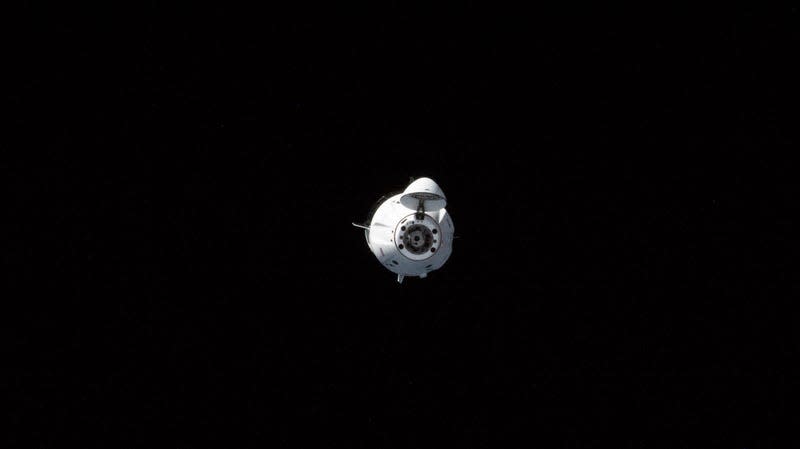
Someone once said that May is a month of renewal, growth, and endless possibilities. That was certainly the case for spaceflight last month, as these striking visuals attest.
May 2023 was a busy one for spaceflight, with private missions blasting off to the ISS, a space tourism venture getting back on track, and an assortment of previously launched spacecraft navigating the cosmic highways. Here are some of our favorite visuals from the previous month.
Read more
Crashed lander spotted
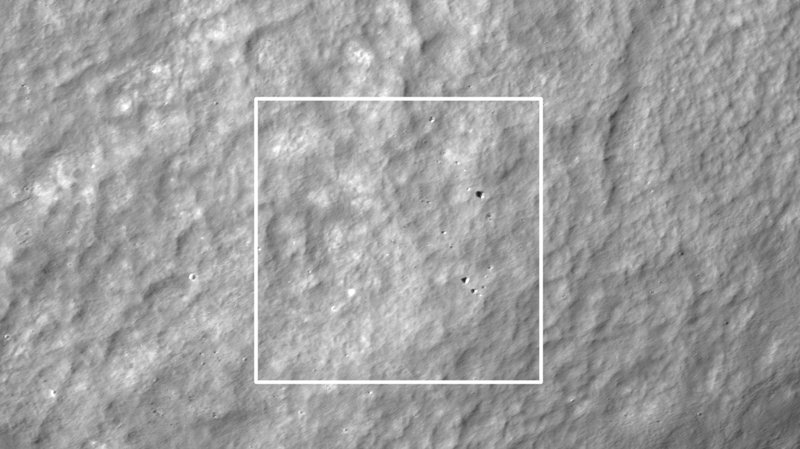
The Hakuto-R Mission 1 lunar lander, operated by private Japanese company ispace, crashed onto the Moon just prior to touchdown on April 25. In May, researchers from Arizona State University released images gathered by NASA’s Lunar Reconnaissance Orbiter, showing the location of the crashed lander and its associated debris field.
Spectacular New Zealand launch
Rocket Lab successfully launched an Electron rocket on May 25, delivering the second batch of NASA’s storm-monitoring TROPICS satellites to orbit. The rocket took off from Launch Complex 1 Pad B in Māhia, New Zealand, providing this spectacular view.
Crowded space station
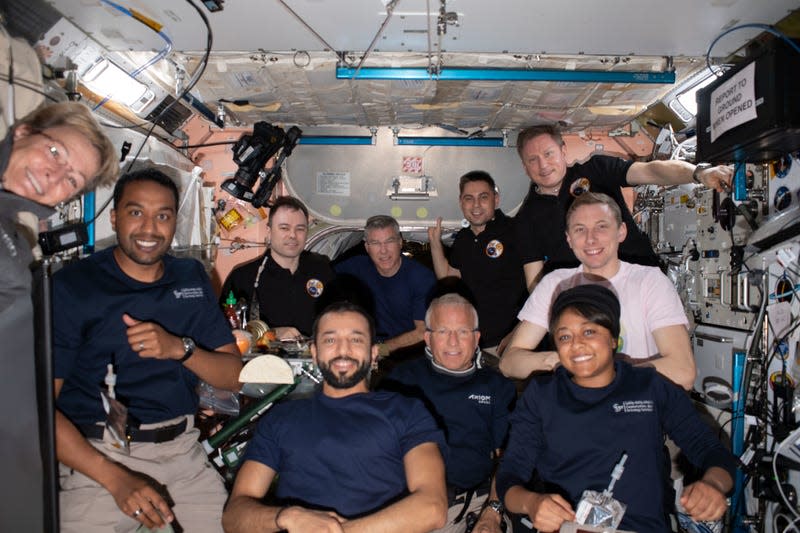
The International Space Station became a crowded place with the arrival of the four-person Ax-2 crew on May 22—the second private space mission from Axiom Space—bringing the orbiting lab’s total population to 11 (NASA astronaut Frank Rubio is not pictured). The Ax-2 crew and the Expedition 69 crew members posed for this photo on May 23.
Virgin Galactic back on track
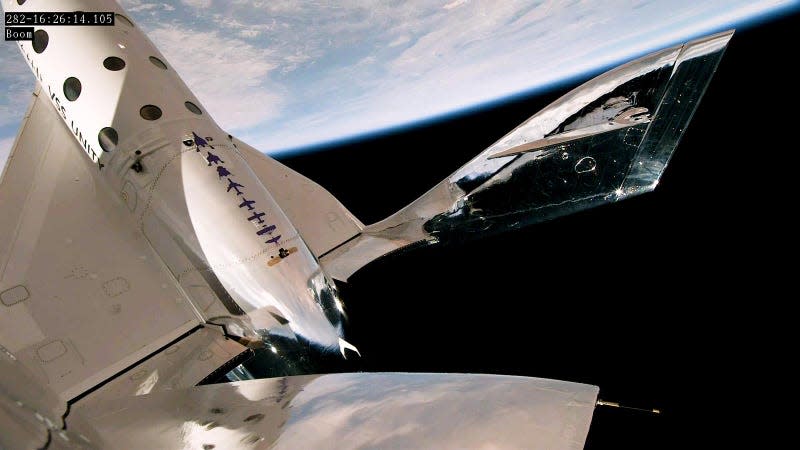
For the first time in two years, Virgin Galactic flew its VSS Unity spaceplane to space, or at least the company’s definition of space, reaching a maximum altitude of 54.2 miles (87 kilometers). With the successful crewed flight, Virgin Galactic plans to restart its commercial space tourism offering, possibly as early as June.
The ‘Eye of the Sahara’
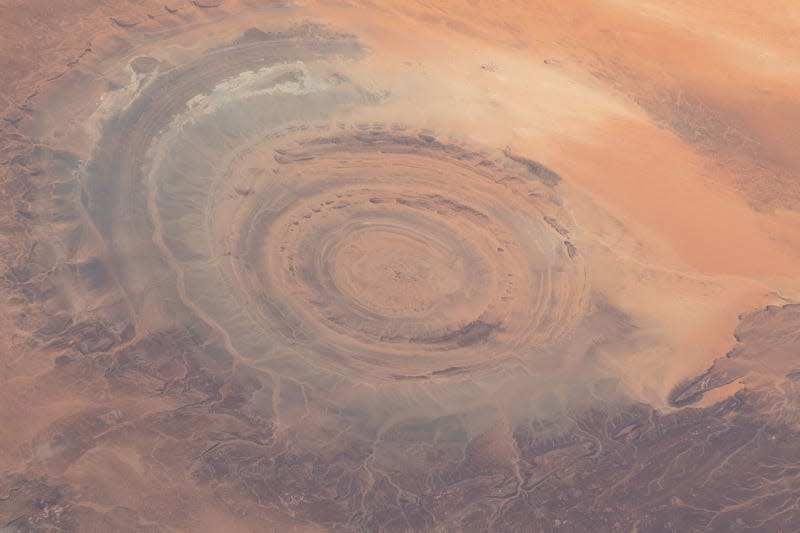
The Richat Structure, also known as the “Eye of the Sahara,” is shown in this striking photo taken from the International Space Station. The eroded geological dome is located in Mauritania, and it was photographed from an altitude of 259 miles (416 kilometers) above the African continent.
NASA’s Second Artemis lunar lander
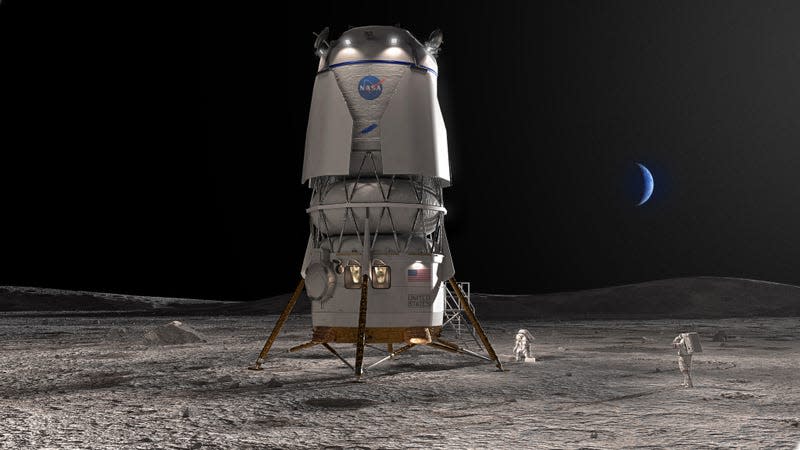
On May 19, NASA announced that Blue Origin will design, develop, and test the space agency’s second crewed lunar lander for the upcoming Artemis 5 mission and subsequent missions to the lunar surface (SpaceX was previously chosen to develop the first). The Jeff Bezos-founded company will build it alongside its National Team partners Lockheed Martin, Boeing, Draper, Astrobotic, and Honeybee Robotics, and do so under a $3.4 billion contract. The conceptual image is very cool, depicting the fully reusable human landing system in action.
JUICE sighting!
The European Space Agency’s JUICE probe is currently on an eight-year journey to Jupiter, where it will explore the gas giant’s icy moons. In May, we got a chance to see the spacecraft in action, thanks to a series of images captured by the Airbus Robotic Telescope (ART) based in Spain. JUICE was approximately 1 million miles (1.5 million kilometers) from Earth at the time.
The hot, hot heat of reentry
SpaceX footage released in early May showed a Falcon Heavy fairing blazing through the atmosphere at speeds reaching Mach 15. SpaceX said the fairing reentry for this mission “was the hottest and fastest we’ve ever attempted.”
Space walkers walking
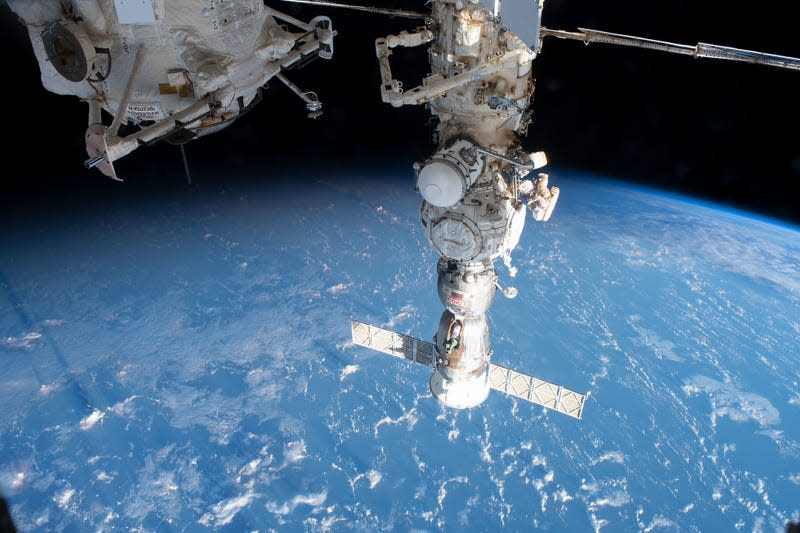
Cosmonauts Dmitri Petelin and Sergey Prokopyev performed a space walk outside the ISS on May 12 to deploy and activate a radiator on the Nauka multipurpose laboratory module. The spacewalk took five hours and 14 minutes to complete.
Creepy robotic snake
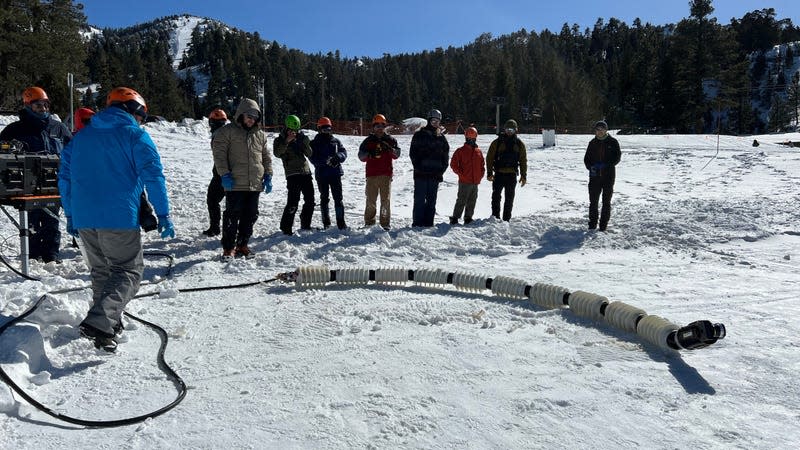
Also in May, a team of engineers from NASA’s Jet Propulsion Laboratory (JPL) unleashed EELS, or the Exobiology Extant Life Surveyor. It’s just a prototype, but a similar robotic snake could eventually slither through various alien terrains, including the Moon or Saturn’s icy moon Enceladus.
CAPSTONE’s Moon shot
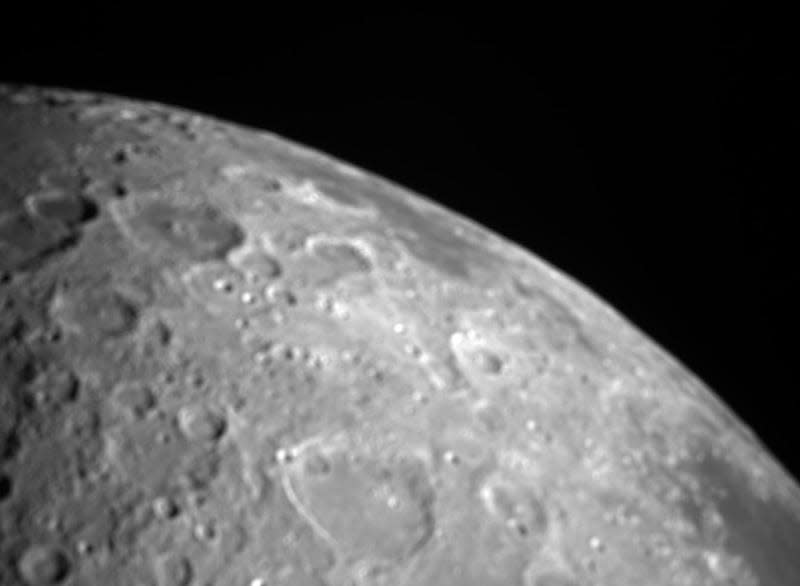
Okay, this is admittedly not the best photo of the Moon we’ve ever seen, but taking pretty pictures isn’t what the NASA-funded CAPSTONE mission was designed to do. The microwave-sized probe, operated by Advanced Space, is currently testing a unique elliptical orbit around the Moon, while also testing new navigation technologies. Still, the new Moon photo—the first taken by CAPSTONE—reminds us that the tiny satellite is out there performing important work.
Old plane, new look

In May, bankrupt satellite launch company Virgin Orbit sold off its assets, including its iconic Cosmic Girl—a modified Boeing 747 aircraft used to launch rockets from high altitudes. Stratolaunch scooped up the plane and didn’t waste any time, releasing conceptual images of the plane with updated livery. Makes you wonder what thoughts crossed Virgin Orbit founder Richard Branson’s mind when he saw what they did–or will do—to his former plane, which currently looks like this:
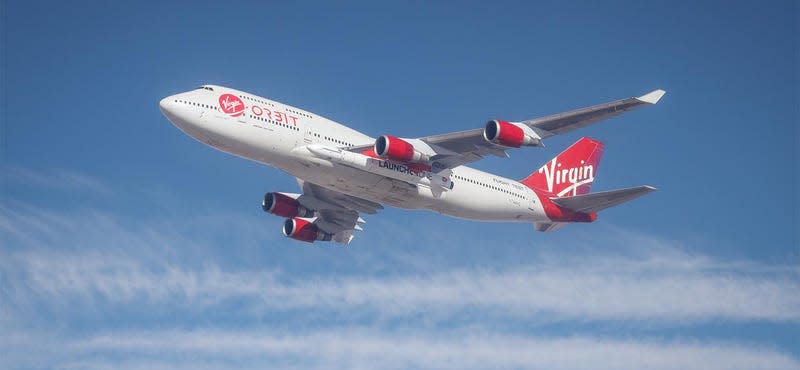
More Falcon 9 launches, more Starlinks
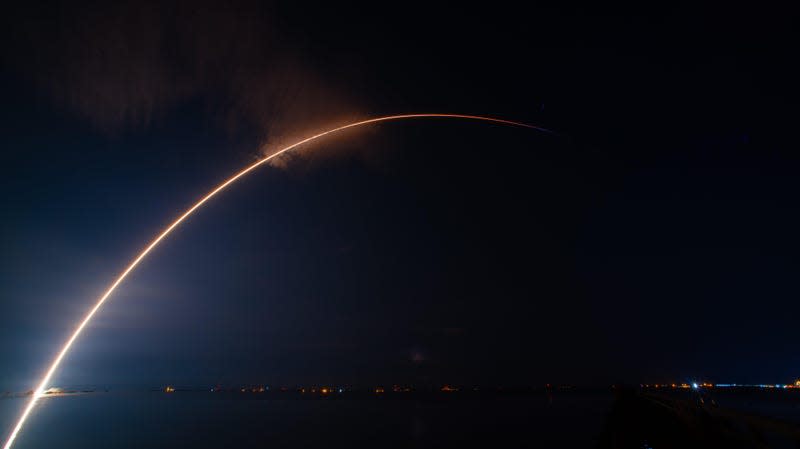
This timelapse shows a Falcon 9 rocket launching from pad 40 at Cape Canaveral Space Force Station on May 19. The rocket deliver a batch of 22 upgraded next-gen Starlink satellites.
Kennedy Gator

Spring is in the air, and that means it’s alligator breeding season. Kennedy Space Center hosts its fair share of gators, including this young specimen, found resting on a concrete structure at the Florida spaceport.
Back on Earth
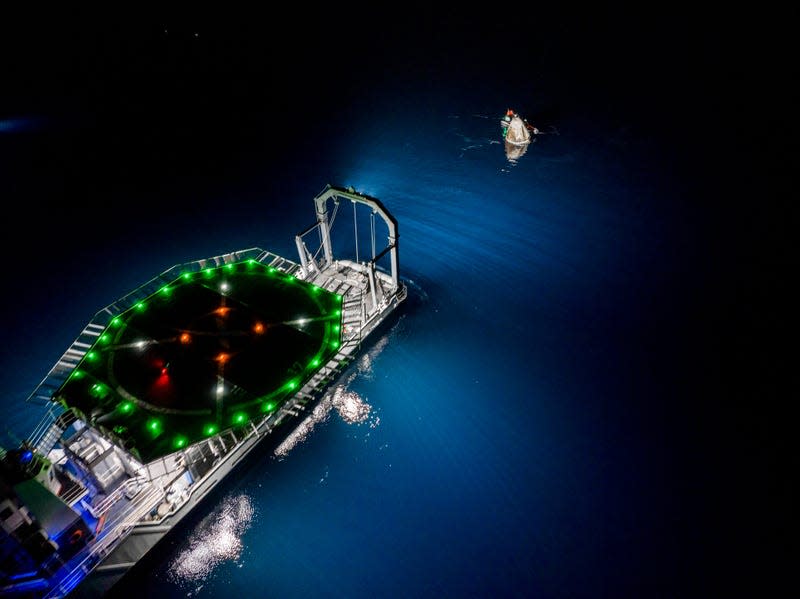
This striking photo from SpaceX shows the company’s drone ship retrieving the Ax-2 mission capsule on May 30, following its 10-day mission.
For more spaceflight in your life, follow us on Twitter and bookmark Gizmodo’s dedicated Spaceflight page.
More from Gizmodo
Sign up for Gizmodo's Newsletter. For the latest news, Facebook, Twitter and Instagram.

